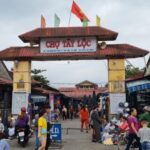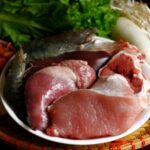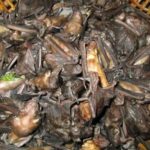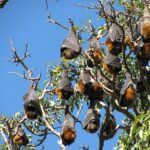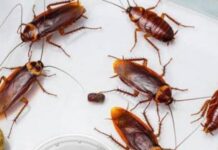A Half-Century Journey in the Heart of Southern Vietnam
What sets Quang Bien Market apart is its very own historical formation story. Located at km 75+500 on National Highway 1A in Quang Tien, Trang Bom district, the market is a product of the migration wave from Central Vietnam to the South in the 1970s.
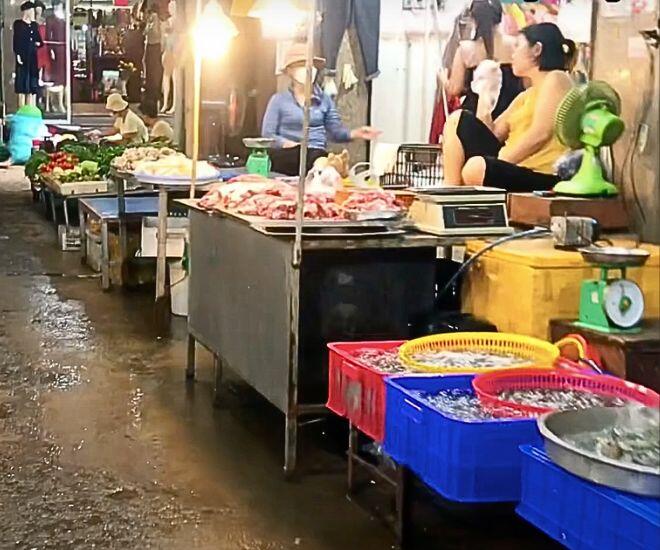
Quang Bien Market’s predecessor dates back to 1972 when 311 Catholic households from Quang Tri migrated to Thong Nhat (now Trang Bom district) under the guidance of priest John Baotixita Nguyen Kim Thong. The name “Quang Bien” was officially formed in 1974 when Bishop Joseph Le Van An decided to combine the names of “Quang Tri” and “Bien Hoa” to name the new parish.
Initially, the market was just a small gathering point for the Hue migrant community, where they exchanged specialties from their hometown such as fermented shrimp paste, Nam Pho rice noodles, and Hue beef noodle soup. From the makeshift stalls along the dirt road, Quang Bien Market gradually formed and became the economic and cultural center of the area.
The period from 1987 to 2012 marked a significant development when Quang Bien Church was built and expanded, attracting more residents to live there. The year 2010 marked an important turning point when the local government decided to invest in upgrading the market into a concentrated commercial area with an area of 1.2 hectares, divided into 150 stalls categorized by product groups.
Most recently, in 2023, on the occasion of the 50th anniversary of the parish’s establishment, the market was further embellished with a modern lighting system and additional signboards in both Vietnamese and English, aiming to serve international tourists.
Distinctive Architectural Space
Quang Bien Market has a unique layout with the distribution of rows of stalls along the north-south axis of the national highway, forming a Y-shape. The eastern area focuses on fresh agricultural products, the center is the area for clothing and household goods, while the food court is located deep inside, creating a separate space for unique culinary experiences.
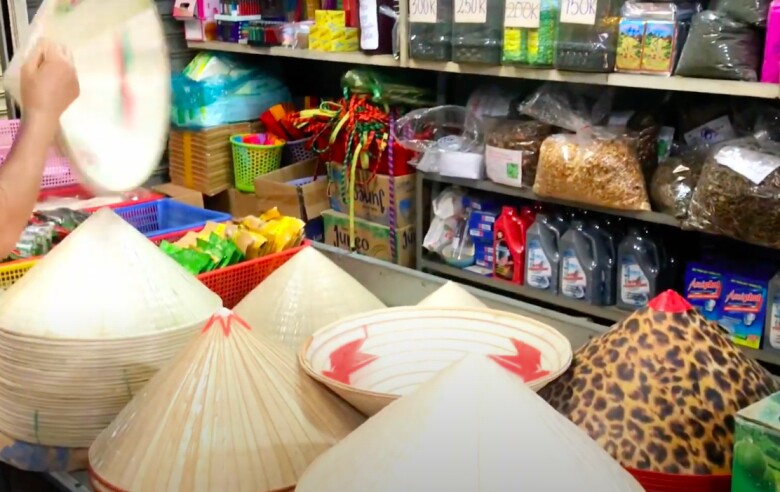
This design not only maximizes the narrow space along the highway but also ensures a continuous flow of goods from early morning to late at night, serving the diverse needs of local people and tourists.
Diverse Ecosystem of Goods
Typical Agricultural Products of Dong Nai
The eastern area of the market is where typical fresh agricultural products of Dong Nai province gather. From the golden Trang Bom mangosteens and juicy Tan Trieu pomelos to wild hybrid pork raised in Cat Tien National Park, all exude local flavors.
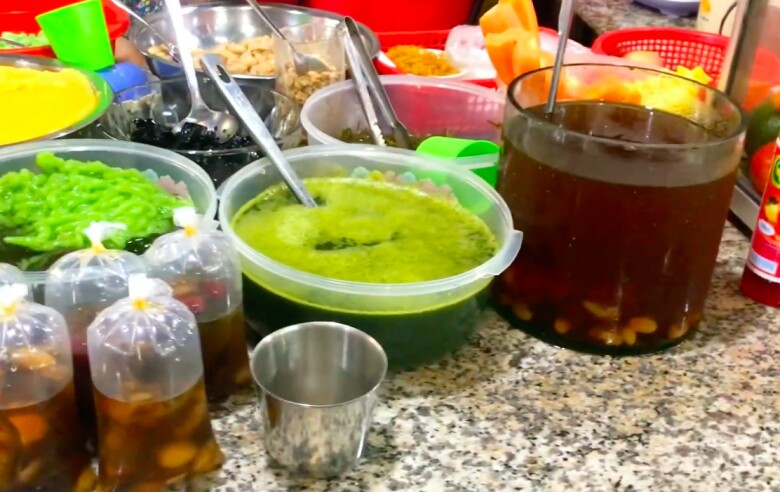
Especially, forest vegetables such as “doat choai”, “la giang”, and “mang le” – typical ingredients in Southern cuisine – are also sold here. “Mang le” is harvested from old rubber forests, has a natural sweetness and crunchy texture, and is an indispensable ingredient in the sour soups of the South.
Hue Cuisine Area
Accounting for 40% of the total number of stalls, the Hue cuisine area in Quang Bien Market is the most unique feature. This is where the original flavors of the ancient capital are preserved, but creative variations are also offered to suit the taste of Southern people.
The dishes are prepared according to family recipes, with main ingredients such as shrimp paste or rice flour directly transported from Thua Thien – Hue, ensuring the authentic taste of the homeland.
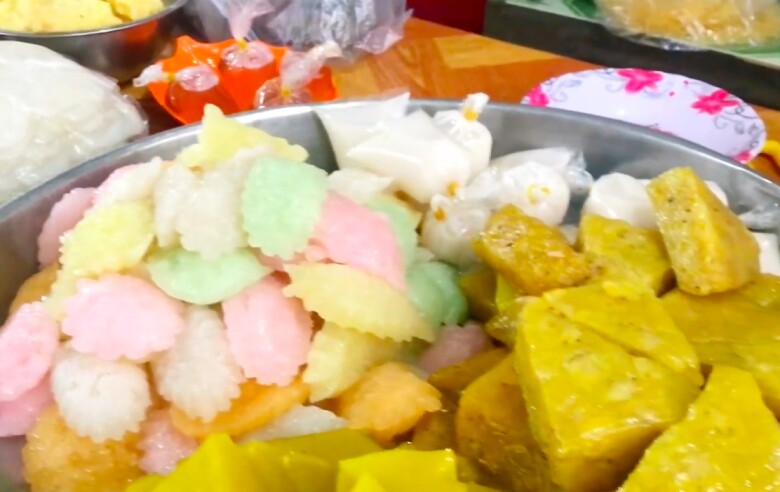
The “banh bot loc” (cassava starch cake) here is special as it is wrapped in banana leaves instead of the traditional dong leaves, with a filling of fresh shrimp and three-layer pork fat. The difference lies in the cassava starch, which is kneaded with shrimp broth to create a natural pink color, making it both delicious and beautiful.
The “bun rieu cua dong” (rice vermicelli with freshwater crab soup) is a popular dish with broth made from pork bones and freshwater crabs, served with a variety of fresh herbs including lettuce, Vietnamese balm, and perilla, and especially “la vang” – a typical vegetable of the white sand region in Central Vietnam.
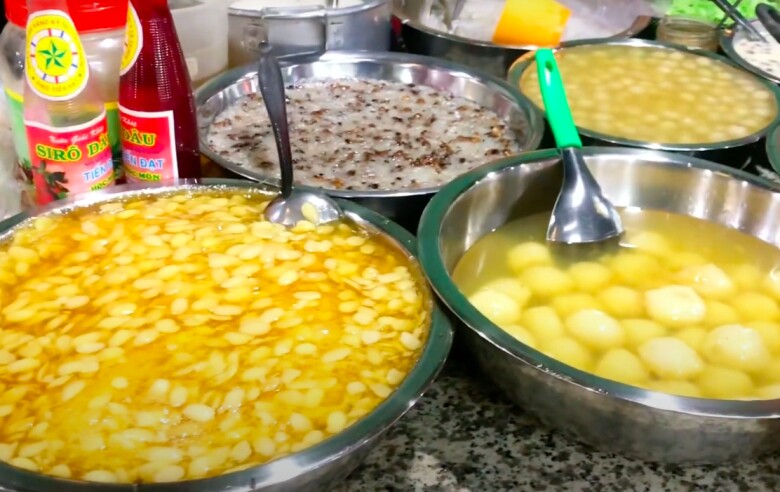
For dessert, there are various types of Hue che (sweet soup) with over 20 variations, from traditional to creative ones such as “che dau van” (bean sweet soup), “che hat sen long nhan” (sweet soup with lotus seeds and longan), and “che bap nuong” (grilled corn sweet soup). The most notable is the “che cung dinh” (royal sweet soup), which consists of seven types of beans symbolizing the seven stars, cooked according to the recipe of the Nguyen Dynasty eunuchs.
Handicraft Products
Along the main walkways, visitors will come across stalls selling handicrafts from Tan Van pottery village (Bien Hoa) and XQ Da Lat embroidered paintings. The blue and white porcelain tea sets with intricate dragon and phoenix patterns, priced between 200,000 and 500,000 VND per set depending on the size, make meaningful souvenirs for tourists.
The Rhythm of Quang Bien Market
From 5 am to 9 pm every day, Quang Bien Market is bustling with buyers and sellers, creating a vibrant picture of the local economic and social life. However, each time frame has its own characteristics, offering multiple choices for shoppers.
From 5 am to 7 am is the ideal time to buy fresh seafood such as squid and shrimp just brought up by Can Gio fishermen. This is also when the vegetable stalls are filled with the freshest produce from the surrounding gardens.
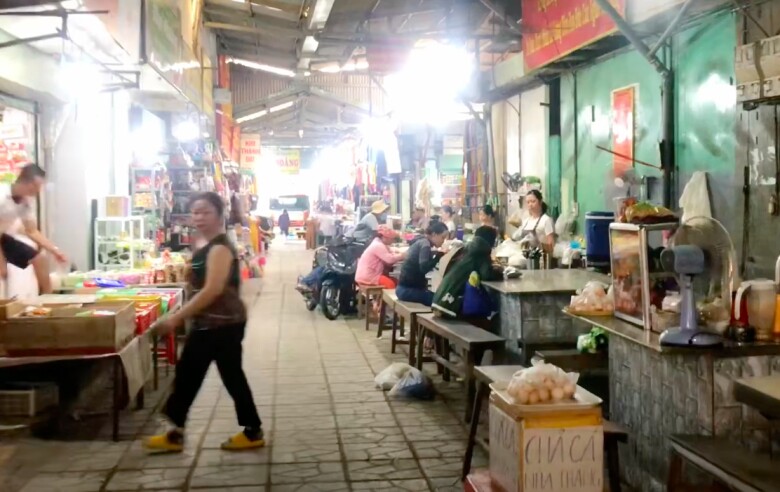
In the afternoon, from 3 pm to 5 pm, is when Hue dishes are displayed most diversely, especially various types of cakes just out of the oven, still hot and fragrant. This is also the peak hour when many people stop by the market to buy ingredients for dinner.
From 7 pm to 9 pm, prices in the market tend to be 10-15% softer, especially for vegetables and dried goods. This is an ideal time for those who want to save on shopping.
What makes Quang Bien Market uniquely attractive is the cultural blend between the North and the South. From the way goods are displayed and sold to the dishes offered, everything reflects the integration without assimilation of the Hue people in their new land.
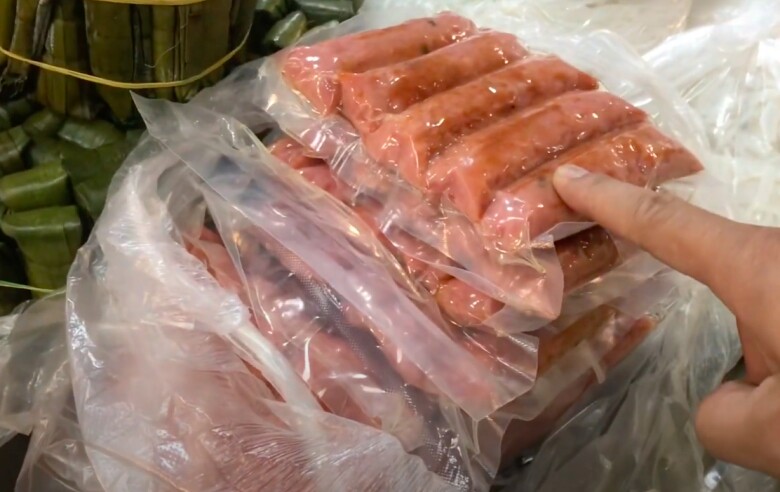
The merchants in the market, although they have lived in Dong Nai for decades, still retain the characteristic accent of Hue people, gentle and melodious. The way dishes are prepared also follows the traditional style, focusing on subtle flavors and beautiful presentation. Meanwhile, elements of Southern culture are also prominent through distinctive dishes such as “banh tet” (cylindrical glutinous rice cake) and “banh gio” (steamed rice cake), or the colorful and vibrant decorations in the market space.
Looking to the Future
After more than 50 years of formation and development, Quang Bien Market has become not only a familiar shopping place for local people but also an attractive destination in cultural and culinary tours of Dong Nai. With its strategic location on National Highway 1A and the investment of the local government, Quang Bien Market is gradually developing towards sustainability, preserving its unique cultural identity while also being modern and convenient.
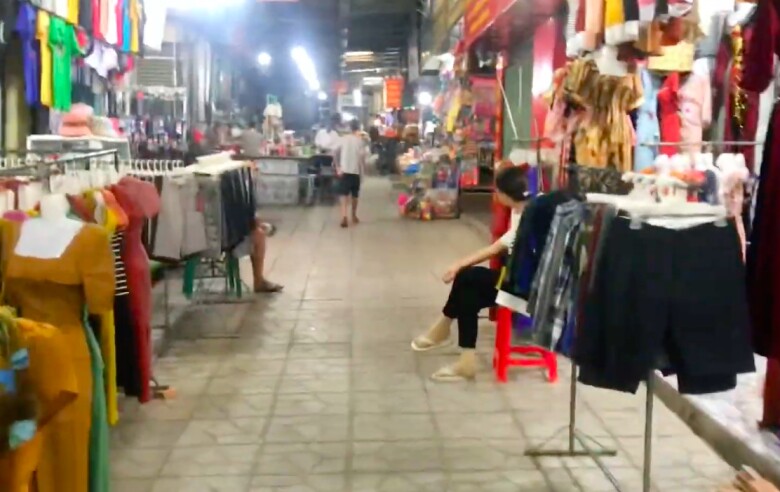
The journey of discovering Quang Bien Market is an adventure through space and time, where each dish carries a story of the cultural blend between the North and the South. Every flavor here not only satisfies the taste buds but also opens a door to the knowledge of migration history and the process of cultural exchange between the two regions.
With its historical, cultural, and culinary values, Quang Bien Market has many opportunities to develop into a must-visit cultural tourist destination when coming to Dong Nai. It is not only the pride of Quang Tien people but also the common cultural asset of the whole province of Dong Nai.
The Savory Secrets of Saigon: A Mother’s Guide to the Perfect Bowl of Vietnamese Noodle Soup
Hủ tiếu Nam Vang is a beloved Vietnamese noodle soup that stands out from the rest with its delicate rice noodles, rich and flavorful broth, and a delightful assortment of toppings. The soft and smooth noodles perfectly complement the hearty broth, which is carefully prepared to achieve a perfect balance of flavors. The toppings, such as shrimp, quail eggs, and beef offal, elevate the dish with their unique textures and tastes, creating an irresistible and indulgent culinary experience.

























